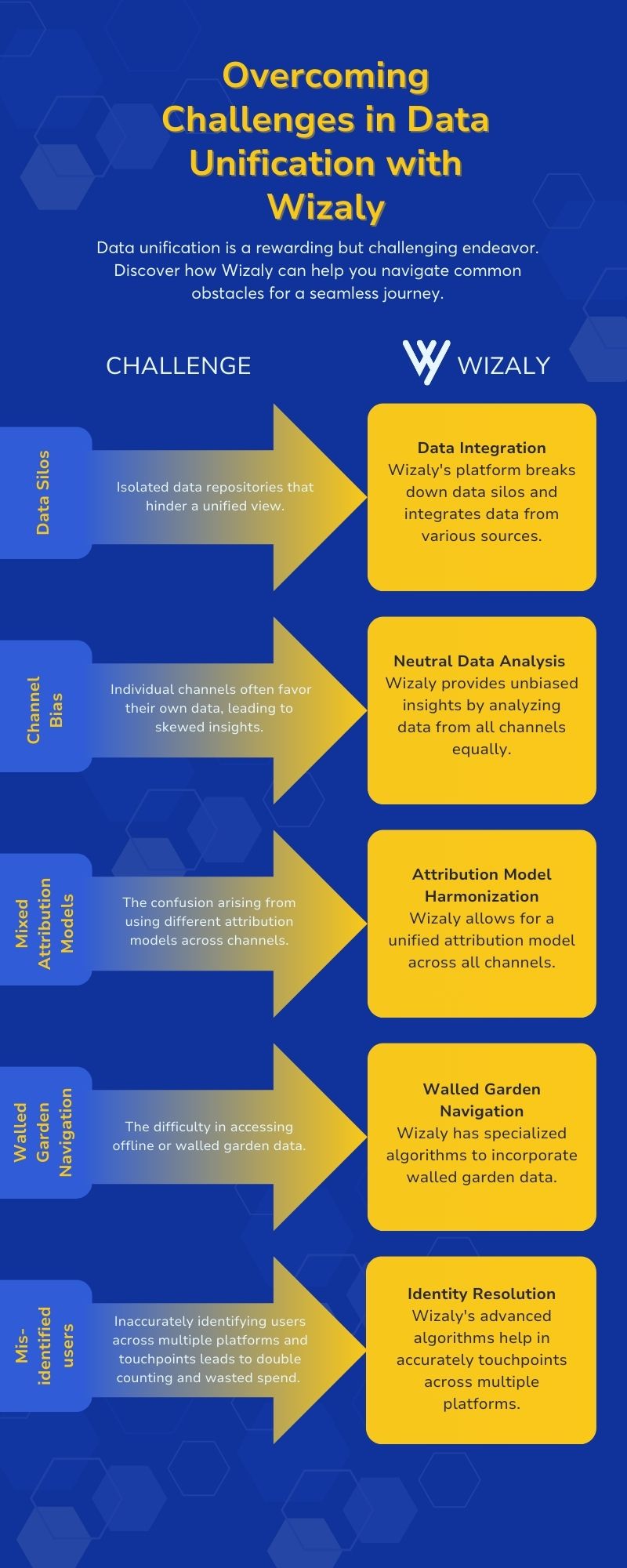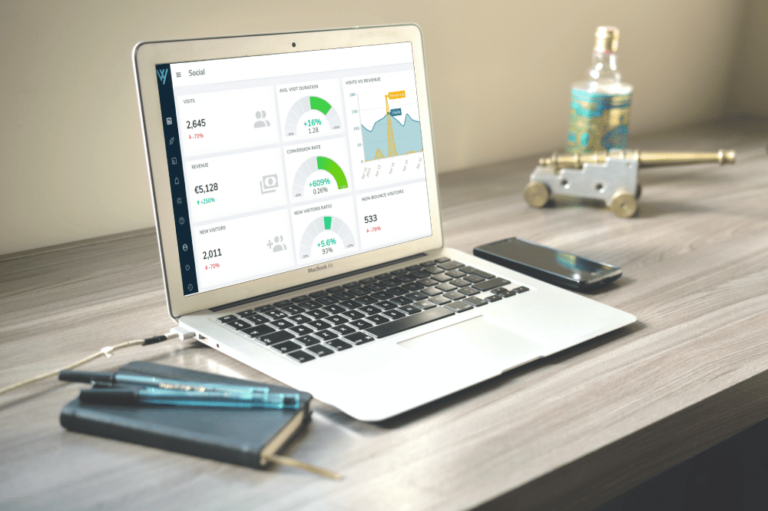Picture this: You’re a seasoned marketing director, and you’ve just walked into a Monday morning meeting armed with what you believe is a comprehensive report on customer behavior. You’re ready to unveil groundbreaking strategies based on weeks of data collection from various sources—CRM, social media, customer surveys, you name it. But just as you’re about to make your case, the Sales Director interrupts with data that completely contradicts your findings. Confusion fills the room. The CEO looks disappointed, and you’re left questioning where it all went wrong.
The culprit? Fragmented customer data scattered across multiple platforms, making any attempt at a unified customer profile akin to solving a jigsaw puzzle with missing pieces. If this scenario sounds all too familiar, then you’re in the right place. This article is your roadmap to navigating the complex but crucial world of data unification for customer data. We’ll explore how unifying your data can not only save your Monday morning meetings but also revolutionize your data-driven marketing strategies. So, are you ready to turn your data chaos into a well-orchestrated symphony? Let’s dive in.
Why Customer Data Unification is Crucial for Marketing Success
Data unification isn’t just a buzzword; it’s a necessity for any business looking to optimize its marketing efforts. But why is that important? Here are some compelling reasons:
- Streamlined Data Management: Managing multiple data points from various sources can be overwhelming. Data unification simplifies data management by consolidating all information into a single dataset.
- Enhanced Customer Experience: A unified customer profile allows for personalized marketing campaigns, improving the overall customer experience.
- Accurate Data Analytics: With unified and accurate data, your marketing team can make data-driven decisions with confidence.
- Efficient Marketing Automation: Unified data enables streamlined marketing automation processes, allowing for more targeted marketing strategies.
- Compliance and Security: Data Consolidation ensures that all customer data is stored in a secure and compliant manner, reducing the risk of data breaches.
In the complex landscape of modern marketing, data unification has emerged as a cornerstone for achieving success. It’s not just a technical requirement but a strategic imperative for businesses that aim to stay ahead in a competitive market. One of the most compelling reasons to invest in data harmonization is the simplification of data management. When you’re juggling multiple data points from a variety of sources like CRM systems, customer behavior analytics, and even external data, the task can quickly become overwhelming. Consolidating this wealth of data into a single, unified dataset can dramatically simplify the management process, freeing up valuable time and resources.
But the benefits of data Consolidation go beyond mere convenience. A unified customer profile can be a game-changer for your marketing strategies. Imagine being able to craft highly personalized marketing campaigns that resonate with individual customer needs and preferences. This level of personalization can significantly enhance the customer experience, leading to higher engagement rates, increased loyalty, and ultimately, more conversions.
Data integration also plays a critical role in data analytics. Fragmented or siloed data can lead to inaccurate analyses, making it challenging to derive actionable insights. When your data is unified and accurate, it provides a reliable foundation for data-driven decision-making. Your marketing team can analyze customer behavior, track key performance indicators, and predict future trends with a higher degree of confidence. This enables you to make informed decisions that align with your business goals and drive measurable results.
Moreover, unified data can streamline your marketing automation processes. With a consolidated view of customer information, you can design more targeted and effective marketing strategies. Whether it’s segmenting your audience for email campaigns or automating customer journey touchpoints, unified data provides the clarity and precision needed for high-impact marketing.
Last but not least, data unification ensures that all customer data is stored in a secure and compliant manner. With increasing concerns about data privacy and the stringent regulations that come with it, maintaining the integrity and security of customer data is more crucial than ever. Data unification helps in standardizing security measures and ensuring compliance with legal requirements, thereby reducing the risk of data breaches and the potential legal repercussions that could follow.
In summary, data unification is not just a technical requirement but a strategic asset that can elevate every aspect of your marketing efforts. From simplifying data management and enhancing customer experience to enabling accurate data analytics and streamlining marketing automation, the benefits are manifold and far-reaching.

The Data Unification Process: A Step-by-Step Guide
Understanding the unification process is crucial for any marketing expert. So, what does the it entail?
- Data Collection: The first step involves collecting data from multiple sources, including CRM systems, customer behavior analytics, and external data.
- Data Cleaning: Duplicate data points and inaccuracies must be removed to ensure the dataset’s integrity.
- Data Integration: This involves migrating that data into a single data platform, such as a data warehouse or a customer data platform.
- Data Analytics: Once the data is unified, data analytics tools can be employed to derive actionable insights.
- Implementation: The final step involves using these data insights to inform sales and marketing strategies.
Understanding the intricacies of the data harmonization process is essential for marketing experts who aim to harness the full potential of their data. The process begins with data collection, a critical phase that sets the stage for all subsequent steps. During this phase, data is gathered from a multitude of sources, including CRM systems, customer behavior analytics, sales and marketing funnels, and even external data from third-party vendors or public databases. The objective is to create a comprehensive dataset that captures all relevant customer information.
Once the data is collected, the next crucial step is data cleaning. This phase involves meticulous scrutiny to identify and remove duplicate data points, inaccuracies, and inconsistencies that could compromise the dataset’s integrity. Data cleaning is not just a one-time activity but an ongoing process that ensures the data remains reliable and up-to-date. It’s a foundational step that directly impacts the quality of insights you can derive later.
After the data has been cleaned, it’s time for data integration. This step involves migrating that data into a single, unified platform, such as a data warehouse or a customer data platform. The goal is to centralize all data so that it can be easily accessed and analyzed by different departments within the organization. Data integration often involves technical challenges, such as ensuring compatibility between different data formats and systems. However, modern data Consolidation platforms offer various tools and features to streamline this process, making it easier than ever to integrate disparate data sources.
With the data now unified, the next phase is data analytics. This is where the real magic happens. Advanced data analytics tools can sift through the unified dataset to identify patterns, trends, and insights that were previously hidden in the fragmented data landscape. Whether it’s understanding customer behavior, tracking key performance indicators, or predicting future market trends, data analytics provides the actionable insights that marketing teams crave. It’s the phase where data transforms from mere numbers into strategic information that can drive business decisions.
The final step in the data unification is implementation. This involves taking the insights derived from data analytics and applying them to your sales and marketing strategies. Whether it’s refining your customer segmentation for more targeted marketing campaigns or optimizing your sales funnel for better conversion rates, the insights gained from a unified dataset enable you to make data-driven decisions that align with your business objectives.
In essence, the process is a comprehensive journey that transforms fragmented, isolated data into a strategic asset. It’s a multi-step process that requires careful planning, execution, and ongoing maintenance. However, the benefits it offers in terms of streamlined data management, accurate analytics, and effective implementation make it an invaluable investment for any marketing expert.
How to Choose the Right Data Unification Platform
Selecting the right platform is crucial for the success of your data unification efforts. Here are some factors to consider:
- Scalability: Can the platform handle the wealth of data your business generates?
- User-Friendly Interface: The platform should be easy to use for both data scientists and marketing teams.
- Customization: Look for a platform that allows you to tailor data collection and analytics to your specific needs.
- Security: Ensure that the platform complies with data security and privacy regulations.
- Cost: While it’s tempting to go for the cheapest option, remember that you often get what you pay for. Consider the platform’s ROI when making your decision.
Selecting the right platform for data unification is a critical decision that can make or break your data-driven marketing initiatives. One of the first factors to consider is scalability. As your business grows, so does the volume of data you generate. A good data integration platform should be able to scale with your needs, accommodating an ever-increasing wealth of data without compromising performance. It’s essential to choose a platform that can handle not just your current data load but also anticipate future growth.
User-friendliness is another crucial factor. A platform that offers a user-friendly interface will be easier to navigate, not just for data scientists but also for marketing teams who may not be as technically proficient. The ease of use can significantly speed up the data unification process, allowing your team to focus on deriving actionable insights rather than wrestling with a complicated system.
Customization is often overlooked but is incredibly important. Every business is unique, and so are its data needs. A one-size-fits-all approach rarely works when it comes to unification. The platform you choose should offer enough flexibility to tailor data collection, integration, and analytics processes to meet your specific business requirements. Whether it’s custom data fields, specialized reporting, or unique data sources, the platform should be adaptable to your needs.
Security is a non-negotiable factor in today’s digital landscape. With increasing concerns about data breaches and stringent regulations like GDPR and CCPA, ensuring the security and privacy of customer data is paramount. The platform you choose should comply with all relevant data security and privacy laws. It should offer robust security features like encryption, multi-factor authentication, and regular security audits to protect your data from unauthorized access and breaches.
Cost is always a significant consideration, but it’s important to look beyond just the upfront expense. A cheaper platform may save you money in the short term but could cost you more in the long run if it lacks essential features, scalability, or security measures. Therefore, consider the total cost of ownership, which includes not just the platform’s price but also the potential ROI it can deliver through improved data management and analytics.
In summary, choosing the right data unification platform is a complex but crucial task that requires careful consideration of various factors. From scalability and user-friendliness to customization, security, and cost, each aspect plays a vital role in determining the platform’s suitability for your business. Making an informed choice can set the stage for successful data unification, enabling you to leverage your data as a strategic asset in your marketing efforts.

Overcoming Challenges in Unifying Data
Even with the best tools and intentions, you may encounter challenges in the data unification process. Here’s how to overcome them:
- Data Silos: These are isolated pockets of data that are not integrated into the main dataset. Data silos can be broken down through effective data integration strategies.
- Data Quality: Ensure that you’re working with accurate data by implementing rigorous data cleaning processes.
- Technical Limitations: Some older CRM systems may not be compatible with modern data unification platforms. In such cases, consider upgrading your CRM system.
- Resource Constraints: Data unification isn’t a one-time effort; it requires ongoing maintenance. Make sure you allocate sufficient resources for this.
- Change Management: Employees may resist new systems. Effective change management strategies can help in the smooth transition to a unified data system.
Embarking on the journey of data unification is not without its challenges. Even with the best tools and intentions, obstacles are inevitable. One of the most common challenges is the existence of data silos. These are isolated pockets of data that are not integrated into the main dataset and can significantly hinder the process. Data silos often exist due to historical reasons, such as departmental divisions or the use of different software systems for various business functions. Effective data integration strategies, such as employing middleware or specialized data integration tools, can help break down these silos and create a more cohesive dataset.
Another challenge that organizations often face is maintaining data quality. Inaccurate or outdated data can severely compromise the integrity of your unified dataset. Rigorous data cleaning processes are essential to ensure that you’re working with accurate and reliable data. This involves not just one-time cleaning but ongoing data quality checks and validation procedures. Automated data cleaning tools can be particularly useful in maintaining high data quality over time.
Technical limitations can also pose challenges, especially when dealing with legacy systems that may not be compatible with modern data unification platforms. In such cases, upgrading your CRM or other data management systems may be necessary. While this can involve significant time and financial investment, the long-term benefits often outweigh the costs. Modern systems are not only more compatible with data unification platforms but also offer better scalability and security features.
Resource constraints are another issue that can impede the process. Data unification is not a one-time effort but requires ongoing maintenance and resources. This includes not just technical resources but also human expertise to manage the data, perform analytics, and implement insights into actionable strategies. Therefore, it’s crucial to allocate sufficient resources, both in terms of personnel and budget, for successful data consolidation.
Lastly, the human element should not be underestimated. Employees may resist the change to new systems or processes, leading to implementation challenges. Effective change management strategies, such as training programs, internal communications, and phased rollouts, can help in the smooth transition to a unified data system. Employee buy-in is crucial for the success of any data unification project, and efforts should be made to address any concerns or resistance proactively.
In conclusion, while data unification offers immense benefits, it’s not without its challenges. From data silos and data quality issues to technical limitations and resource constraints, various obstacles can impede your efforts. However, with careful planning, the right tools, and effective strategies, these challenges can be overcome, paving the way for successful data-driven marketing initiatives.
In Conclusion
Data unification is an indispensable process for any business aiming for marketing success. It streamlines data management, enhances customer experience, and enables accurate data analytics. Wizaly can aggregate data from multiple sources, providing a unified view of marketing performance, which is crucial for addressing data inconsistencies



